Lifespan Integration Therapy: A Comprehensive Guide to Timeline-Based Healing
What is Lifespan Integration Therapy?
Lifespan Integration (LI) is an innovative therapeutic approach that has emerged as a powerful modality for healing trauma and promoting neural integration. Developed by Peggy Pace in the early 2000s, LI has evolved significantly through collaborative refinement into a sophisticated, brain-based therapy that addresses trauma without re-traumatizing clients.
At its core, Lifespan Integration works by helping clients develop a more coherent life narrative and sense of self. The therapy operates on the neurobiological principle that by repeatedly experiencing one’s timeline—from birth to present—the brain creates new neural connections that integrate fragmented aspects of self that became separated during traumatic experiences.
Unlike traditional talk therapies that may overintellectualize trauma, LI engages the brain’s natural capacity for healing by working with memory, time perception, and somatic awareness in a gentle yet profound manner. This approach aligns with cutting-edge understanding of how the brain processes and stores traumatic experiences.
Why Lifespan Integration Has Become a Leading Brain-Based Therapy
Lifespan Integration has gained significant momentum in the therapeutic community as part of what many consider the “post-CBT paradigm” of mental health treatment. This approach privileges brain-based modalities that work directly with neural networks rather than focusing primarily on changing thoughts or behaviors.
LI stands alongside other emerging brain-based approaches such as Brain Spotting, Internal Family Systems (IFS), Somatic Experiencing, and Polyvagal-informed interventions. What distinguishes LI from many other modalities is its gentleness combined with its effectiveness, particularly for clients with complex trauma histories.
The LI community is notably passionate and committed to the ongoing development of the modality. Practitioners frequently report transformative results, both in their personal healing journeys and in their clinical work with clients. This enthusiasm stems from witnessing profound shifts that often occur subtly yet fundamentally reorganize a client’s relationship to their traumatic experiences.
How Lifespan Integration Compares to Other Trauma Modalities
When comparing Lifespan Integration to other trauma-focused approaches like Brain Spotting or EMDR, several key differences emerge. While all these modalities aim to process trauma through brain-based mechanisms, LI is often described as more tolerable for clients with severe, lifelong complex trauma.
Brainspotting and EMDR can sometimes be emotionally overwhelming, potentially activating strong trauma responses during sessions. In contrast, LI emphasizes keeping clients firmly within their window of tolerance throughout the therapeutic process. This makes it accessible to clients who might find other modalities too activating.
Another distinguishing feature of LI is its foundation in attachment theory. The therapeutic relationship in LI serves as a corrective attachment experience, with the therapist providing attuned, regulated presence while guiding clients through protocol work. This relational component supports neural integration and helps repair developmental gaps from early attachment disruptions.
The Central Role of Timelines and Memory Cues
The baseline timeline forms the foundation of Lifespan Integration therapy. Unlike traditional narrative therapy that might involve extensive journaling or elaborate visual representations, LI timelines consist of concise memory cues that evoke specific moments across a person’s lifespan.
These memory cues are typically just 1-3 words that remind the client of a particular experience. For example, “yellow house,” “first grade teacher,” or “college graduation.” Each year of life should have at least one memory cue, with the option to include up to three experiences per year.
The timeline begins with developmental cues for early childhood (when explicit memories may not exist) and continues through to recent experiences. It intentionally includes a balance of positive, negative, and neutral memories to create a complete picture of the client’s life journey.
Through repeated exposure to this timeline, the brain begins to integrate previously disconnected neural networks. Many clients report spontaneously recalling additional memories during this process, further enriching their life narrative and sense of continuity across time.
How Lifespan Integration Addresses Body-Based Trauma
While somatic (body-based) approaches to trauma have gained significant attention, many clients find inhabiting their bodies overwhelming, particularly when trauma has made the body feel unsafe. Lifespan Integration offers a gradual approach to addressing somatic trauma that respects this difficulty.
In the first stage of LI therapy, the focus remains on building a foundation of safety and stability rather than diving directly into bodily sensations. This allows clients who are highly dissociated or “in their heads” to begin the healing process without immediately confronting potentially overwhelming somatic experiences.
As therapy progresses to the second and third stages, body awareness is gently introduced. Clients are invited to notice physical sensations and the felt sense of what emerges during timeline repetitions. The therapist tracks subtle changes in the client’s nervous system, adjusting the pace of work to maintain regulation throughout.
This progressive approach helps clients who have historically used dissociation as a survival strategy to gradually build capacity for embodiment at a pace that feels manageable and safe.
Integrating Fragmented Parts of Self
Trauma often creates fragmentation within the psyche, leading to what some therapeutic traditions call “parts” or “ego states.” These fragmented aspects of self can create internal conflict, with different parts holding contradictory needs, beliefs, and protective strategies.
Lifespan Integration addresses this fragmentation through what practitioners describe as “weaving ego states through time.” By repeatedly experiencing the continuity of their life story from birth to present, clients begin to connect these separated aspects of self into a more coherent whole.
The protocol work helps clients identify limiting beliefs (such as “I’m unimportant” or “People don’t hear me”) and recognize when these beliefs formed. Equally important is recognizing the protective strategies that developed around these beliefs—ways of behaving that once served survival but may now limit connection and authenticity.
Through LI, clients develop compassion for these protective parts while gradually building a stronger core self that can integrate these formerly fragmented aspects into a more unified experience of identity.
The Theoretical Foundations of Lifespan Integration
Lifespan Integration draws from several significant theoretical frameworks in psychology and neuroscience. These include:
Attachment Theory:
Based on the work of Bowlby and Ainsworth, LI recognizes how early attachment relationships shape neural development and relationship patterns throughout life. LI aims to help clients move toward earned secure attachment regardless of their early attachment histories.
Interpersonal Neurobiology:
Drawing from Dan Siegel’s work, LI understands that neural integration—connecting different brain systems—is fundamental to mental health and emotional regulation.
Memory Reconsolidation Theory:
LI leverages the brain’s capacity to revise emotional memories when they are activated in a safe context, allowing traumatic memories to be reconsolidated with new, more adaptive emotional responses.
Polyvagal Theory:
LI practitioners attune to clients’ nervous system states, helping move clients from states of shutdown or hyperarousal into their “window of tolerance” where therapeutic change becomes possible.
Parts Work:
While not explicitly based on Internal Family Systems, LI incorporates understanding of how trauma creates internal fragmentation and how therapy can facilitate integration of these parts.
This theoretical integration allows LI to address trauma at multiple levels—neurobiological, psychological, relational, and somatic—creating a comprehensive approach to healing.
LI Protocols: Structured Yet Flexible Approaches to Healing
Lifespan Integration employs several distinct protocols, each designed to address different aspects of trauma and psychological distress. While structured, these protocols are adapted to each client’s unique needs and nervous system capacity.
Key Protocols in Lifespan Integration
Baseline Timeline:
The foundational protocol consisting of memory cues from birth to present that is repeated to strengthen neural integration and core self.
PTSD Protocol:
Designed for processing specific traumatic events by walking through the high points of the experience from beginning to end, then connecting back to present safety.
Timeline from Explicit Memory (TLM):
A gentler approach than the PTSD protocol, using just one cue that connects to a trauma (typically from the end of the event when some safety was restored) before returning to present time.
Relationship Protocols:
Specifically addressing relational wounds and attachment disruptions by working with the client’s implicit and explicit memories of significant relationships.
Birth to Present Protocol:
A specialized approach for addressing pre-verbal and early developmental trauma.
Protector and Strategy Work:
Protocols that help clients identify and form alliances with protective parts of self that developed to navigate trauma.
Therapists select and sequence these protocols based on careful assessment of the client’s history, current functioning, and therapeutic goals. The progression typically moves from stabilization and building core self in stage one, to deeper trauma processing in stages two and three.
Client Autonomy and Collaborative Healing
A distinctive feature of Lifespan Integration is how it honors client autonomy throughout the therapeutic process. Unlike approaches that might prescribe rigid treatment plans, LI adapts to each client’s unique needs, pace, and nervous system capacity.
In early stages of LI therapy, therapists take an active role in guiding the process, attuning to subtle cues about what the client’s system needs. As therapy progresses and clients develop greater internal resources and self-awareness, they become more collaborative partners in determining the focus of each session.
This respect for autonomy extends to how much clients need to disclose about their traumatic experiences. In LI, clients can process trauma without necessarily sharing detailed narratives—a brief phrase identifying the experience is often sufficient for the brain to reorganize around it.
The therapeutic relationship in LI is characterized by attunement, with the therapist providing a regulated presence that helps contain and process difficult emotional material. This relational component creates a foundation of safety that empowers clients to engage with challenging material at their own pace.
What to Know Before Starting Lifespan Integration
For those considering Lifespan Integration therapy, several important factors should be kept in mind:
Therapeutic Commitment:
Like all trauma therapy, LI represents a significant commitment. While some clients experience rapid shifts for specific issues, addressing complex trauma typically requires ongoing work over time.
Emotional Challenges:
Though LI aims to be gentle, the process can still bring up challenging emotions and memories. Working with a skilled therapist helps ensure these experiences remain manageable and eventually lead to integration rather than overwhelm.
Therapist Training:
LI requires specialized training beyond standard therapeutic education. When seeking an LI therapist, look for someone who has completed formal LI training and ideally continues with ongoing consultation and development in the modality.
Personal Experience:
Many LI therapists have personally experienced the modality as clients before implementing it in their practice. This firsthand understanding of the process often enhances their ability to guide others through it effectively.
Integration with Other Approaches:
LI often works well alongside other therapeutic modalities. Many practitioners integrate LI with approaches like Somatic Experiencing, IFS, or other trauma-informed therapies to create comprehensive treatment plans.
Despite these challenges, the potential benefits of LI make it worth considering, especially for those who have found other trauma approaches too overwhelming or have experienced limited relief from traditional talk therapy.
The Future of Lifespan Integration
As understanding of trauma’s neurobiological impacts continues to evolve, approaches like Lifespan Integration represent the cutting edge of therapeutic intervention. By working directly with the brain’s capacity for integration and healing, LI offers hope for those affected by even severe, complex trauma.
The continued development of LI protocols and growing community of trained practitioners suggest this modality will play an increasingly significant role in trauma treatment. Its gentle approach, respect for client autonomy, and foundation in attachment theory align well with current best practices in trauma-informed care.
For those seeking healing from trauma, relationship difficulties, or challenges with sense of self, Lifespan Integration offers a powerful path forward—one that honors the complexity of human experience while leveraging the brain’s remarkable capacity for growth and change throughout life.
References and Further Reading
-
- Pace, P. (2003). Lifespan Integration: Connecting Ego States through Time. Coherence Press.
- Pace, P. (2012). Lifespan Integration: The Clinical Guide. Coherence Press.
- Siegel, D. J. (2012). The Developing Mind: How Relationships and the Brain Interact to Shape Who We Are (2nd ed.). Guilford Press.
- Schore, A. N. (2003). Affect Regulation and the Repair of the Self. W. W. Norton & Company.
- Van der Kolk, B. (2014). The Body Keeps the Score: Brain, Mind, and Body in the Healing of Trauma. Viking.
- Ecker, B., Ticic, R., & Hulley, L. (2012). Unlocking the Emotional Brain: Eliminating Symptoms at Their Roots Using Memory Reconsolidation. Routledge.
- Porges, S. W. (2011). The Polyvagal Theory: Neurophysiological Foundations of Emotions, Attachment, Communication, and Self-regulation. W. W. Norton & Company.
- Schwartz, R. C. (1995). Internal Family Systems Therapy. Guilford Press.
- Bowlby, J. (1988). A Secure Base: Parent-Child Attachment and Healthy Human Development. Basic Books.
- Levine, P. A. (2010). In an Unspoken Voice: How the Body Releases Trauma and Restores Goodness. North Atlantic Books.
- Ogden, P., Minton, K., & Pain, C. (2006). Trauma and the Body: A Sensorimotor Approach to Psychotherapy. W. W. Norton & Company.
- Heller, L., & LaPierre, A. (2012). Healing Developmental Trauma: How Early Trauma Affects Self-Regulation, Self-Image, and the Capacity for Relationship. North Atlantic Books.
- Fisher, J. (2017). Healing the Fragmented Selves of Trauma Survivors: Overcoming Internal Self-Alienation. Routledge.
- Cozolino, L. (2017). The Neuroscience of Psychotherapy: Healing the Social Brain (3rd ed.). W. W. Norton & Company.
- Dana, D. (2018). The Polyvagal Theory in Therapy: Engaging the Rhythm of Regulation. W. W. Norton & Company.
Online Resources
Getting Lifespan Integration Therapy in Alabama
Taproot Therapy Collective is proud to be one of the leading providers of Lifespan Integration therapy in the state of Alabama, serving Birmingham, Hoover, and surrounding areas. Our LI-trained therapists are among the few certified practitioners in the region.
If you’re interested in experiencing the transformative benefits of Lifespan Integration therapy in the Birmingham area, Taproot Therapy Collective offers this specialized service with multiple trained therapists who can tailor the approach to your specific needs.
As awareness of brain-based therapies continues to grow, Taproot remains committed to making cutting-edge therapeutic approaches accessible to Alabama residents. Whether you’re dealing with PTSD, complex trauma, anxiety, or attachment issues, our team can help you determine if Lifespan Integration is the right approach for your healing journey.
For those outside the Birmingham area, we can also provide referrals to other trained LI practitioners throughout Alabama when available, or discuss telehealth options where appropriate.
Connect with Taproot Therapy Collective
Phone: (205) 598-6471
Location: 2025 Shady Crest Drive, Hoover, AL 35216
Website: gettherapybirmingham.com

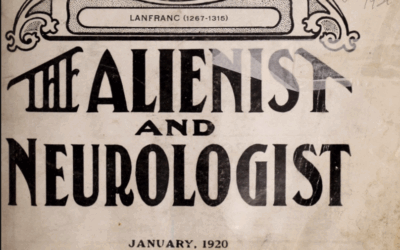
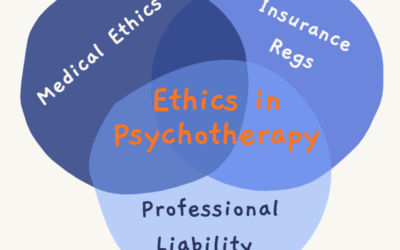




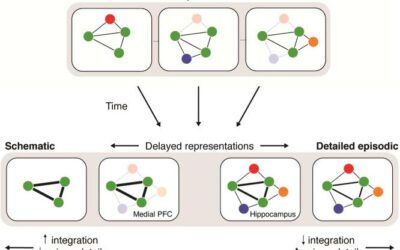








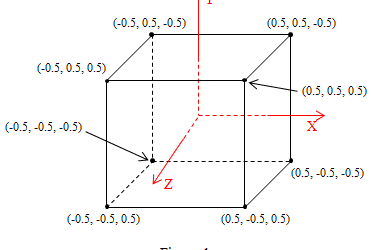







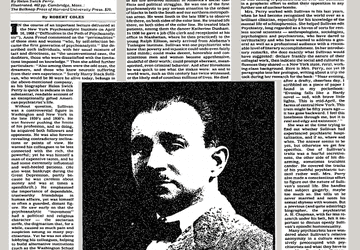

0 Comments